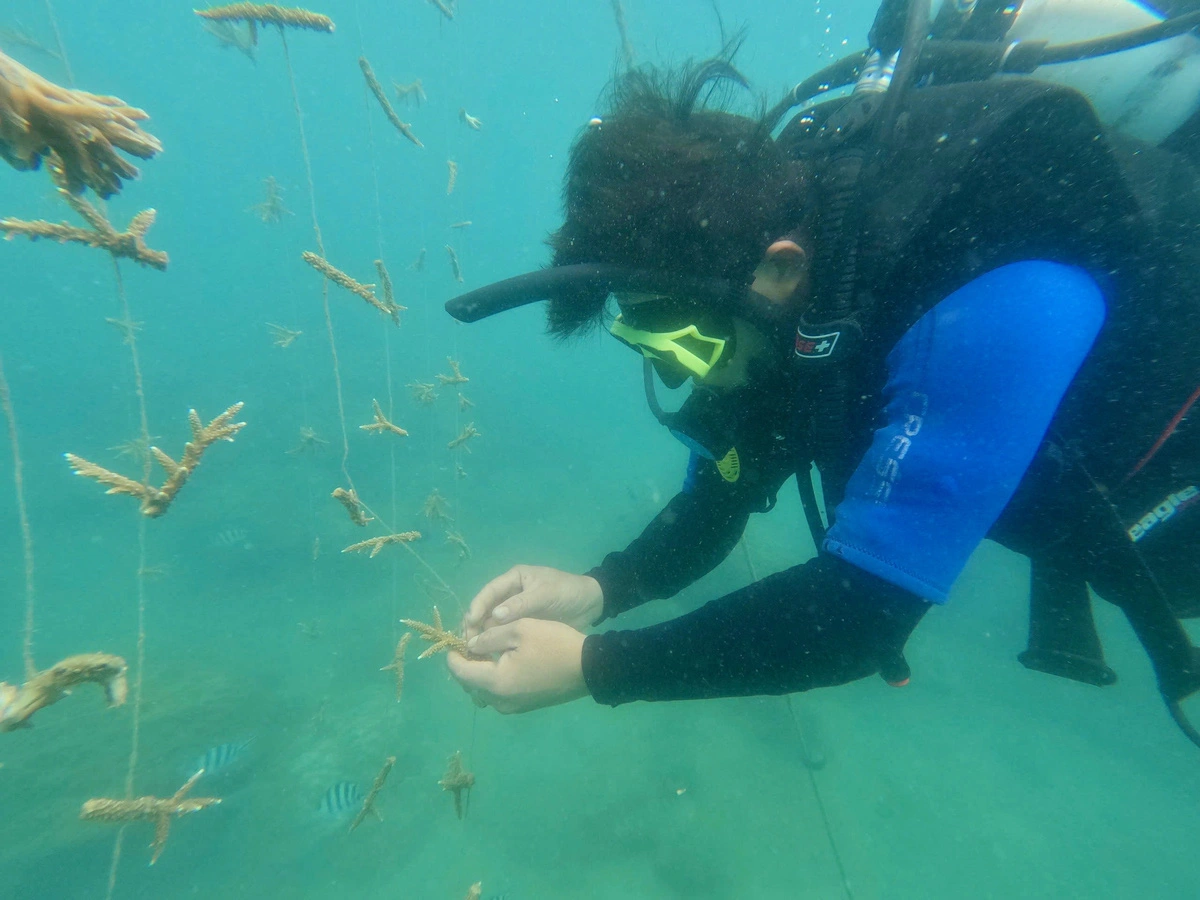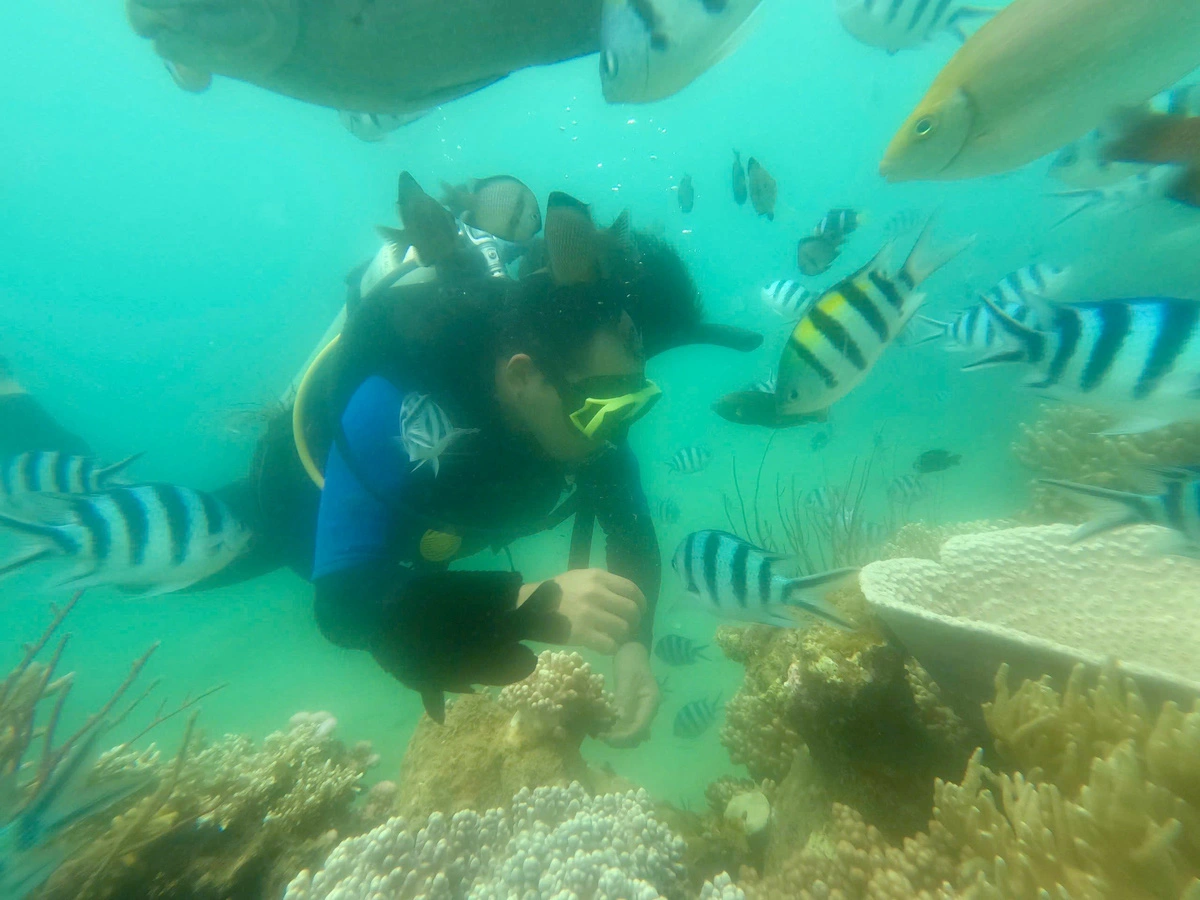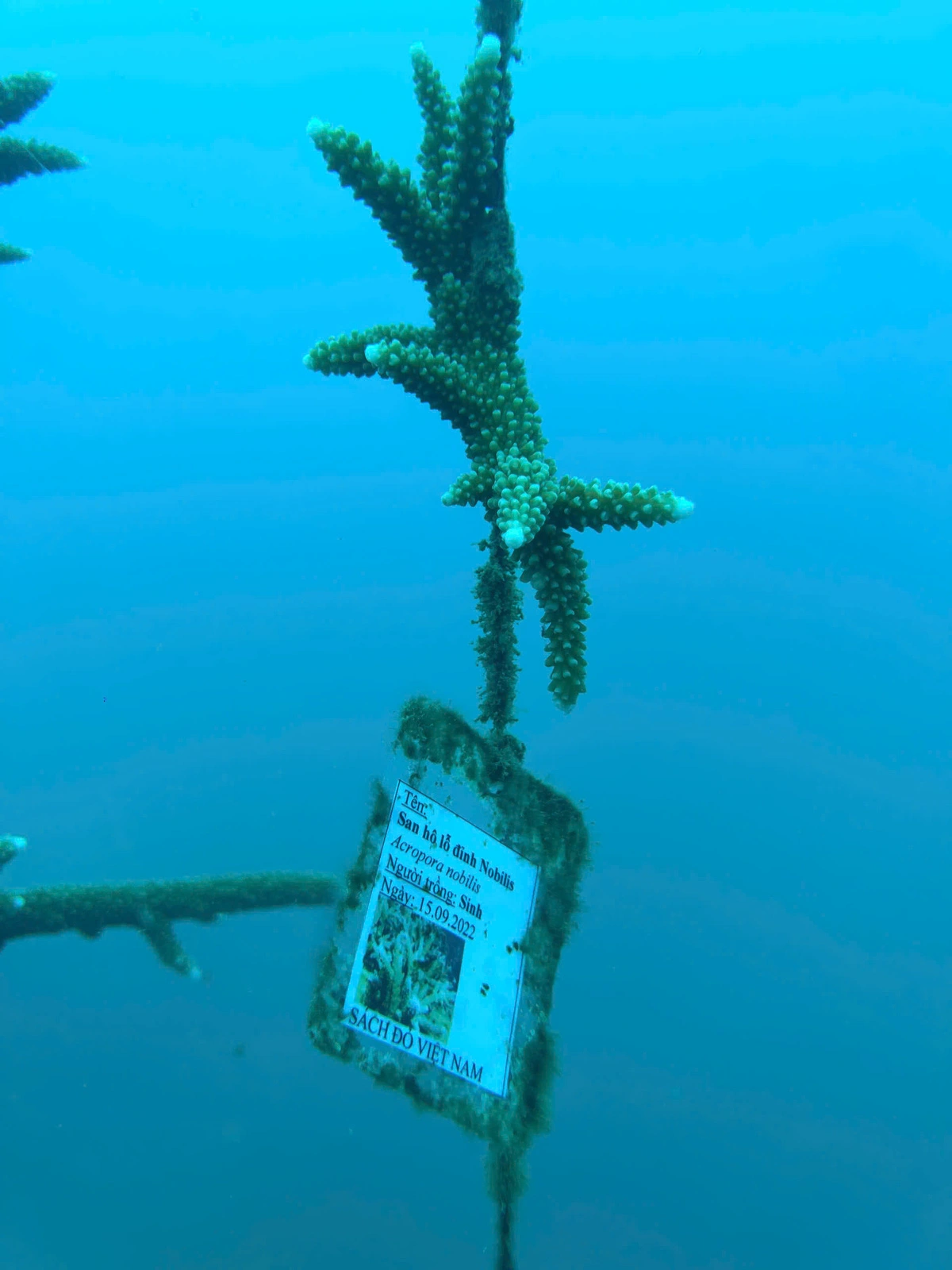Many young people are embarking on the work of regenerating and restoring coral reefs in Nha Trang Bay, located in Khanh Hoa Province, south-central Vietnam.
Beneath the sea surface on Tri Nguyen Island in Nha Trang Bay is a coral incubator run by Wonder World Nha Trang Company.
Tran Van Chuong, a technician at Wonder World Nha Trang Company, donning a wetsuit and bringing a diving weight belt, an oxygen tank, an underwater camera and a ruler, dived into the sea with his colleagues to start their work.
The oxygen tank can be used for more than an hour at a depth of five to 10 meters, Chuong said, adding that they measured coral, cleaned the incubator, caught harmful species, such as Drupella snails and crown-of-thorns starfish, and removed trash stuck to the coral.
|
|
| Coral branches with a length of five centimeters each are hung at the incubator. Photo: Xuan Vu / Tuoi Tre |
Chuong likened coral planting to growing young trees. After being extracted, coral branches are carefully tied to strings.
Once they reach a certain length, they are grafted onto coral reefs.
To ensure their survival, the separated coral branches must be handled with care. An incubator is used to enhance their resistance, Chuong explained.
The growth rate varies depending on the coral species and water conditions.
Antler coral and brain coral require 8-18 months to grow 10-15 cm, while table coral takes 1-3 years to reach 5-10 cm.
|
|
| A technician checks coral branches. Photo: Xuan Vu / Tuoi Tre |
The incubator is now 350 square meters large and home to more than 1,000 branches of coral.
According to Nguyen Vu, managing director at Wonder World Nha Trang Company, Nha Trang has more than 350 species of coral and the company is restoring nearly 50 species.
In addition to the coral incubator on Tri Nguyen Island, the company has been assigned to manage 28 hectares of coral in Tien Beach. This is the first coral farming project that the administration in Khanh Hoa Province and the Ministry of Natural Resources and Environment have allowed to ensure biodiversity protection.
Coral restoration is tough due to the shortage of water surface ownership as well as coral grafting and care programs.
|
|
| A brain coral branch which was planted in 2022. Photo: Xuan Vu / Tuoi Tre |
Coral is increasingly threatened by rising sea temperatures and water pollution, Vu said.
He emphasized that coral restoration requires collective efforts, particularly from young people, who are more receptive to new ideas and solutions.
Everyone can contribute to coral conservation through simple daily actions, such as reducing electricity consumption, minimizing plastic use, and keeping the ocean free of litter.
Like us on Facebook or follow us on Twitter to get the latest news about Vietnam!





Max: 1500 characters
There are no comments yet. Be the first to comment.